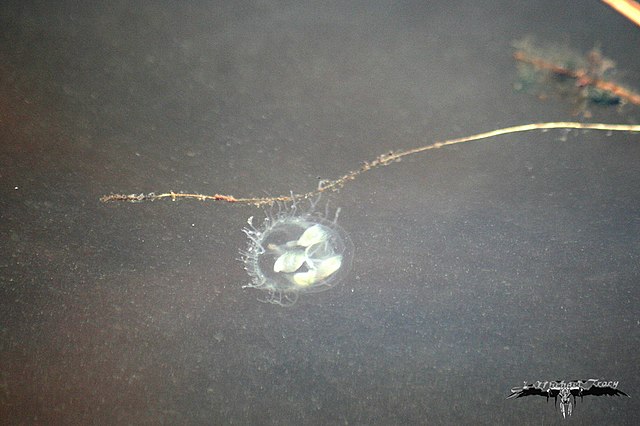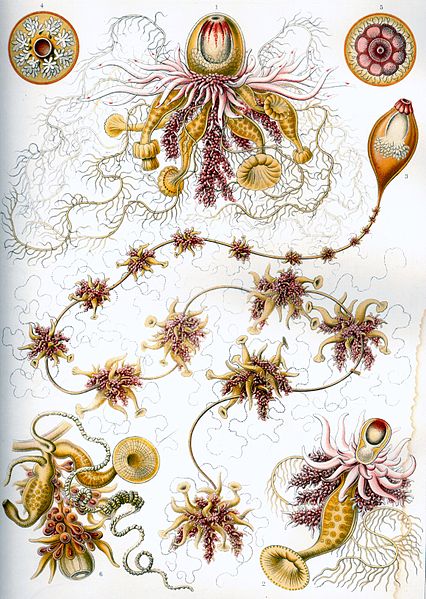Craspedacusta sowerbii or peach blossom jellyfish is a species of freshwater hydrozoan jellyfish, or hydromedusa cnidarian. Hydromedusan jellyfish differ from scyphozoan jellyfish because they have a muscular, shelf-like structure called a velum on the ventral surface, attached to the bell margin. Originally from the Yangtze basin in China, C. sowerbii is an introduced species now found throughout the world in bodies of fresh water.
Craspedacusta sowerbii
A specimen in a farming pond (Upstate New York).
Hydrozoa is a taxonomic class of individually very small, predatory animals, some solitary and some colonial, most of which inhabit saline water. The colonies of the colonial species can be large, and in some cases the specialized individual animals cannot survive outside the colony. A few genera within this class live in freshwater habitats. Hydrozoans are related to jellyfish and corals and belong to the phylum Cnidaria.
Hydrozoa
The hydroid Tubularia indivisa, fertile, Gulen Dive resort, Norway
The highly apomorphic Siphonophorae—like this Portuguese man o' war (Physalia physalis)—have long misled hydrozoan researchers.
Limnomedusae like the flower hat jelly (Olindias formosa) were long allied with Anthomedusae and Leptomedusae in the "Hydroida".






